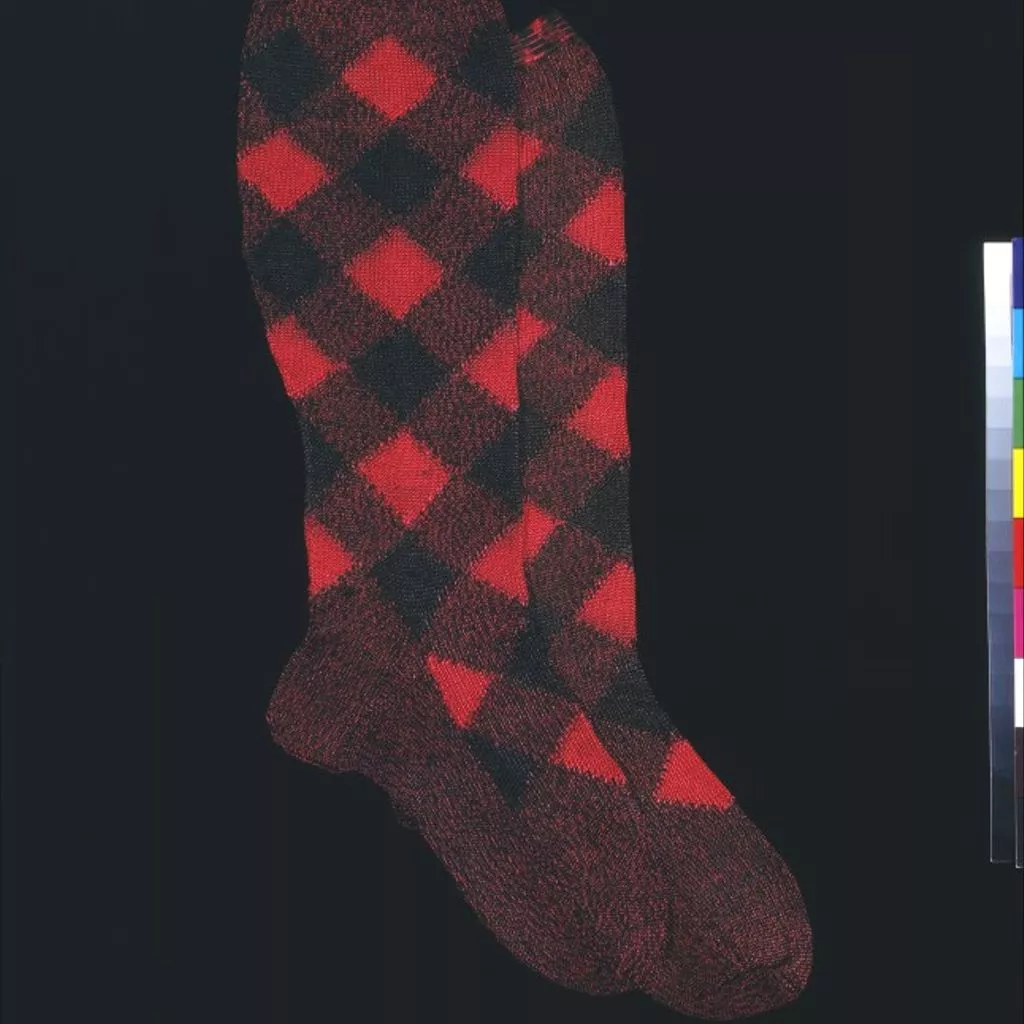1851~, London
1851~, London
- Identifier
- T.60&A-1959
- Acquisition
- Given by the maker
- Carried out by
- Morley, W. H (http://data.silknow.org/activity/designer)
- Collection
- Technique
- Embroidery 75%
- Embroidery 100%
- Embroidery 100%
- Embroidery 40%

- Embroidery 99%
- Embroidery 95%
- Depiction
- Dimension
- 34 cm (height)14 cm (width)
- Production time
- Production place
- Type of object
Description
W.H. Morley showed a group of socks at the Great Exhibition of 1851. They demonstrate the varied patterns and colours which an industrial process could easily produce. The plaids and tartans were in keeping with the current fashion for all things Scottish, which the Royal family helped to make popular.
Material & Making
The feet are joined to the rest of the sock by stitching, instead of knitting in one continuous piece. This method makes the stockings last longer because the construction is stronger, and the stitches are less likely to unravel. Some years later the London department store Debenham & Freebody developed a range of stockings made in this way which they claimed were twice as strong as those made by other methods.
Usage
During the 19th century there was some argument about whether children should wear socks or stockings. Some adults thought that socks were more practical and easier to keep clean. Others thought that stockings were smarter and warmer. Socks with elasticated tops like these would certainly have been more comfortable than wearing stockings with a garter (a strip of fabric) tied around the leg. Pair of child's socks from Great Exhibition, machine-knitted red and black diagonal tartan, made in London, ca. 1851 British Galleries: CHILDREN'S SOCKS
Morley's showed these machine-knitted socks to illustrate features such as elasticated tops and the variety of colourful patterns that they could produce. [27/03/2003] Machine-knitted in red and black diagonal tartan. They are calf length and attached to the welt is a red and black silk elastic. Stitched to them are two labels on parchment and an oval white paper one with the remains of an elaborate green and fold border.



